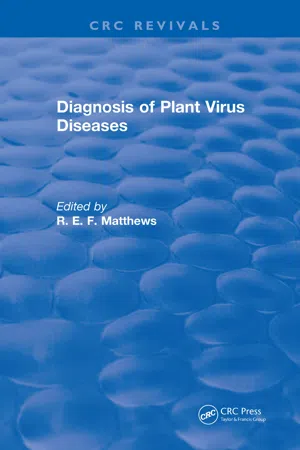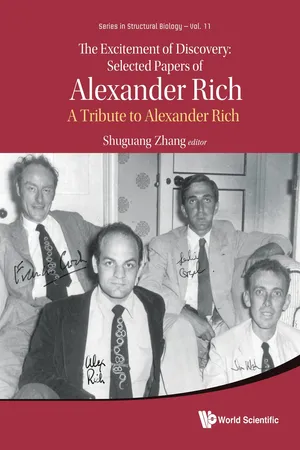Biological Sciences
DNA Hybridisation
DNA hybridization is a process where single-stranded DNA molecules from different sources are allowed to form double-stranded molecules by base-pairing. This technique is used to identify similarities and differences in DNA sequences between different organisms, and to study gene expression and genetic relatedness. It is a fundamental tool in molecular biology and genetics research.
Written by Perlego with AI-assistance
Related key terms
4 Key excerpts on "DNA Hybridisation"
- eBook - ePub
- David P. Clark(Author)
- 2009(Publication Date)
- Academic Cell(Publisher)
Fig. 21.31 ). Some of the single strands of DNA molecule No. 2 will base pair with the single strands of DNA molecule No. 1 and will stick to the filter. (As discussed above, DNA molecule No. 2 must be labeled by radioactivity, fluorescence or some other way to enable its detection.) The more closely related the two molecules are, the more hybrid molecules will be formed and the higher the proportion of molecule No. 2 that will be bound by the filter. For example, if the DNA for a human gene, such as hemoglobin, was fully melted and bound to a filter, then DNA for the same gene but from different animals could be tested. We might expect gorilla DNA to bind strongly, frog DNA to bind weakly and mouse DNA to be intermediate. [Several variants of nucleic acid hybridization are in use. This version, involving the binding of DNA to DNA is known as Southern blotting—see below.]Figure 21.31 Relatedness of DNA by Filter Hybridization (A) DNA No. 1 is denatured and attached to a filter. (B) When DNA No. 2 is added to the filter, some of the DNA strands will hybridize, provided that the sequences are similar enough. If the sequence is identical, all of the single-stranded red DNA should hybridize to strands of green DNA. If the sequences are very different, little or none of the green DNA will hybridize with the red.Hybrid double helices may be formed by annealing single strands that are related in sequence.Another use for hybridization is in isolating genes for cloning. Suppose we already have the human hemoglobin gene and want to isolate the corresponding gorilla gene. First the human DNA is bound to the filter as before. Then gorilla DNA is cut it into short segments with a suitable restriction enzyme (see Ch. 22 for details). The gorilla DNA is heated to melt it into single strands and poured over the filter. The DNA fragment that carries the gorilla gene for hemoglobin will bind to the human hemoglobin gene and remain stuck to the filter. Other, unrelated genes will not hybridize. This approach allows the isolation of new genes provided a related gene is available for hybridization.A wide range of methods based on hybridization is used for analysis in molecular biology. The basic idea in each case is that a known DNA sequence acts as a “probe .” Generally the probe molecule - eBook - ePub
- R. E. F. Matthews(Author)
- 2019(Publication Date)
- CRC Press(Publisher)
A. IntroductionThe Watson and Crick model for the structure of double-stranded (ds) DNA showed that the two strands were held together by hydrogen bonds between specific (complementary) bases, namely adenine and thymidine, cytosine, and guanine. This interaction of base pairing is the basis of all molecular hybridization. The early studies revealed several important features of this process. The ability to use various physical and chemical procedures to disrupt base pairing and hence separate the strands (termed melting or denaturing the nucleic acid) and then to reinstate base pairing and thus renature the ds nucleic acid (termed hybridization) enabled the various factors controlling the stability of the duplex to be examined. Most of these basic studies were performed using both the target and probe DNAs in solution (liquid-liquid hybridization); there are also some data available for RNA:RNA and DNA:RNA interactions in solution. Although most of plant virus diagnosis now involves mixed-phase hybridization with the target immobilized on a solid matrix, the theory developed for liquid-liquid hybridization is still very relevant.Below is a general account of some of the major factors that have to be considered in hybridization experiments. More details on the theory of hybridization can be found in References 16 to 18 .B. Denaturation
Factors affecting denaturation include the following.Temperature — Double-stranded nucleic acid will denature at high temperatures. Strand separation takes place over a relatively narrow range of temperatures, the temperature at which 50% of the sequences are denatured being called the melting temperature (Tm). The major factors affecting the Tm are the composition of the nucleic acid, the concentration of salt in, and the pH of, the solution, and the presence of materials that can disrupt hydrogen bonding, such as formamide. - eBook - ePub
- Matthew Avison(Author)
- 2008(Publication Date)
- Taylor & Francis(Publisher)
3 Hybridization-based methods for measuring transcript levels3.1 The basics of nucleic acid hybridization
The natural structure of DNA is in the form of an anti-parallel double helix with each strand possessing a negatively charged phosphate backbone opposite nitrogenous bases, which are capable of donating hydrogen bonds. The precise geometry of the different bases means that these hydrogen bonds are donated to other bases placed in opposition to them in an anti-parallel fashion using the classic Watson–Crick base pairing rubric: A=T and G≡C. These pairs of bases are said to be ‘complementary’ to one another. Pairs of complementary nucleotides can form hydrogen bonds in solution, but if two complementary polynucleotides come together, the strength of the hydrogen-bond attraction between the molecules is equal to the sum of all the individual nucleotide interactions. Pure genomic DNA consists of two perfectly complementary strands.Hydrogen bonds between the individual strands of a DNA molecule are usually broken in the test tube in two main ways: first, by heating the molecule so the strands vibrate faster and faster until they separate; second, removing the hydrogen bonding potential by raising the pH such that the protons are sucked out to interact with OH- ions in solution. When DNA molecules are heated to separate the two strands, they are said to have been ‘melted’, when sodium hydroxide is used to raise the pH, the DNA is said to be ‘denatured’. When the temperature or pH is lowered again and the strands come back together to reform a duplex, this is referred to as ‘annealing’, or perhaps more accurately, ‘re-annealing’.Since it is much easier to manipulate the temperature of a solution rather than its pH, and since long-term exposure to alkaline pH can result in damage to nucleic acids (particularly to RNA) heat is the preferred choice for converting double-stranded nucleic acids into their constituent strands. The amount of heat needed to melt a DNA molecule is defined by the ‘melting temperature’, which is assigned to each nucleic acid duplex. Mathematically, the melting temperature of a duplex is the temperature in degrees centigrade at which half of all the double-stranded molecules in a sample are melted. The melting temperature depends on a number of factors, but essentially it is dictated by the number of hydrogen bonds that are keeping the duplex together. The more hydrogen bonds, the more heat needed to break them all. The overall length of the DNA molecule dictates the total number of hydrogen bonds present, but this is a very complex relationship, since long, single-stranded molecules can form intramolecular secondary structures, adversely affecting inter-strand annealing. The ‘GC content’ (i.e. the proportion of the sequence that is made up of guanine and cytosine nucleotides) of a DNA molecule affects its melting temperature because G and C bases donate three hydrogen bonds, whereas A and T bases donate two. Thus the higher the GC content, the greater the density of hydrogen bonds, and the more heat needed to break them all. Other factors that can affect annealing include Na+ concentration (concentrations of around 1 M are required for maximal annealing). This is the case because Na+ - eBook - ePub
The Excitement of Discovery: Selected Papers of Alexander Rich
A Tribute to Alexander Rich
- Shuguang Zhang(Author)
- 2018(Publication Date)
- WSPC(Publisher)
4 for DNA brick assemblies. The impact of Alex’s discovery has been overwhelming.Confirmation of Watson–Crick Base Pairing. A key forerunner to the Watson–Crick proposal of DNA base pairing was Chargaff’s discovery of the base ratios in a variety of organisms: the ratio of A to T and the ratio of G to C were near unity, suggesting that a purine pairs with a pyrimidine. Watson and Crick proposed that O6 of G accepts a hydrogen bond from N4 of C, and that N1 of G donates a hydrogen bond to N3 of C. They ignored the possibility of the third hydrogen bond wherein N2 of G donates to O2 of C. Likewise, they proposed that N6 of A donates a hydrogen bond to O4 of T (or U) and that N3 of T (or U) donates a hydrogen bond to N1 of A.One way to confirm the correctness of these proposals was to examine high-resolution crystal structures containing complexes of both components of the base pair. The G–C pair proposed by Watson and Crick, including the third hydrogen bond, was found (1963) by EJ Obrien in a co-crystal, establishing the nature of the base pair. This was not the case with the A–T (U) base pair. The first crystal structure showing the co-crystallization of A and T was reported by Karst Hoogsteen in 1959. It showed N6 of A donating a hydrogen bond to O4 of T, but N3 of T donated a hydrogen bond to the imidazole N7 of A. If this had been the only structure not showing Watson–Crick base pairing, it would not have been a major issue. However, in the next dozen years, nearly 20 co-crystals of A and T or U derivatives were reported, and they all showed Hoogsteen base pairing, or reverse-Hoogsteen base pairing (O2, rather than O4 is the acceptor of the hydrogen bond from N6 of A in the Hoogsteen arrangement) or reverse Watson–Crick base pairing (N3 of T donates to N1 of A, but N6 of A donates to O2 of T). The Watson–Crick base pair proved elusive until the structure of the dinucleoside phosphate ApU was solved in Alex’s lab in late 1972, showing that it formed a mini-Watson–Crick double helix in the crystal.
Learn about this page
Index pages curate the most relevant extracts from our library of academic textbooks. They’ve been created using an in-house natural language model (NLM), each adding context and meaning to key research topics.



